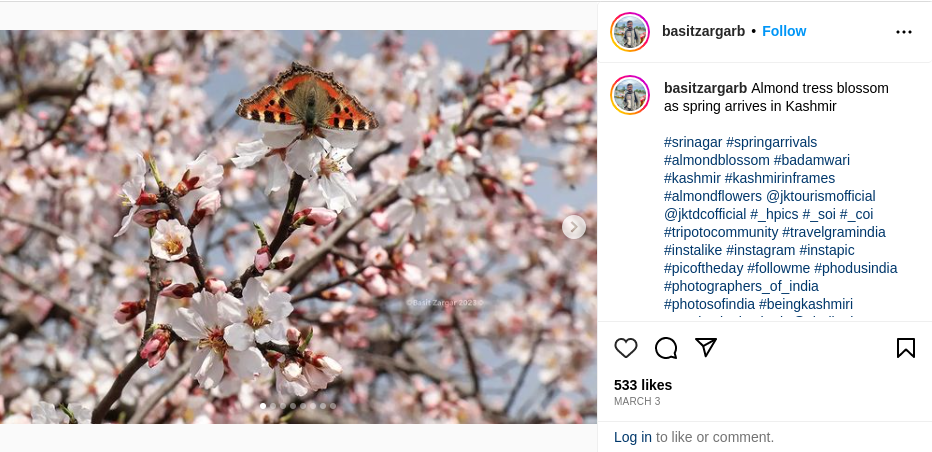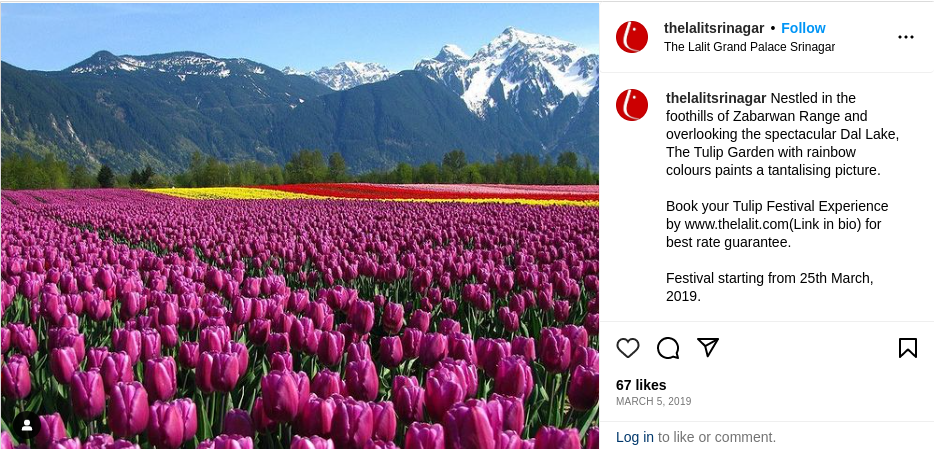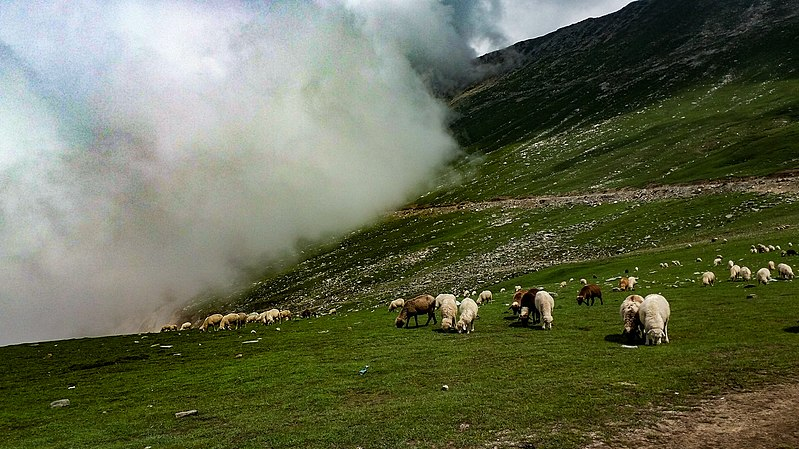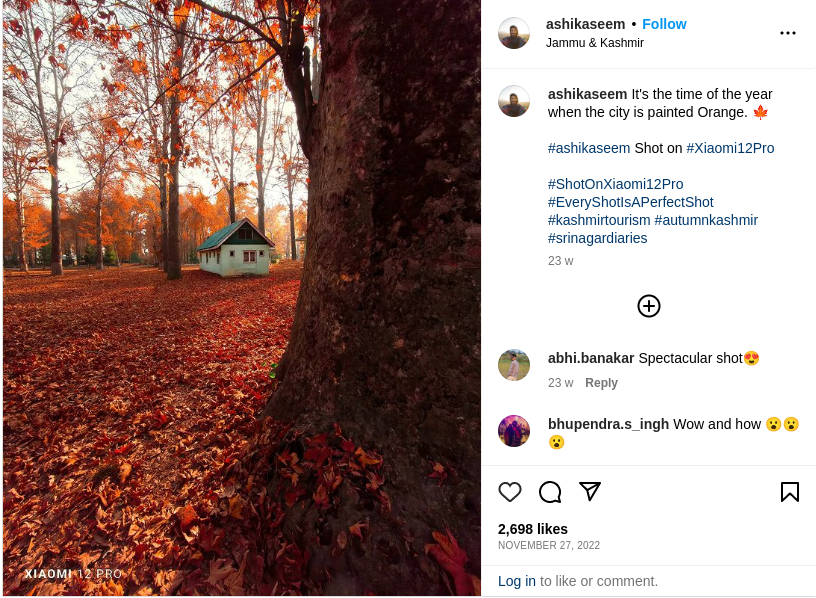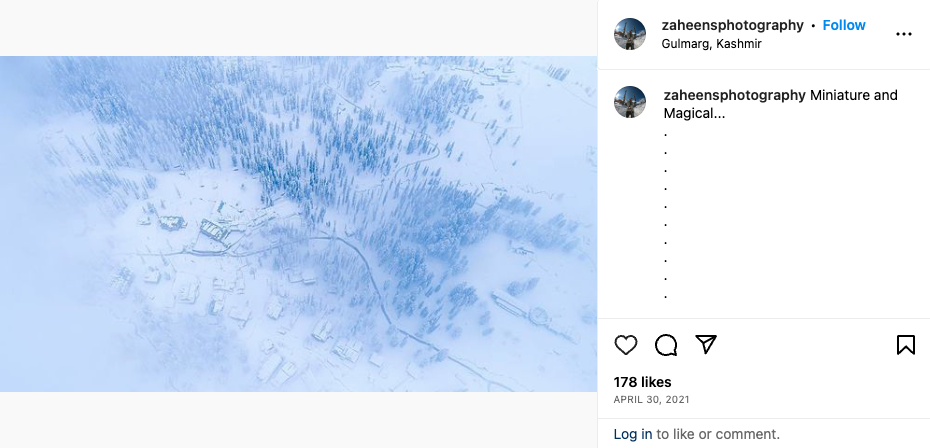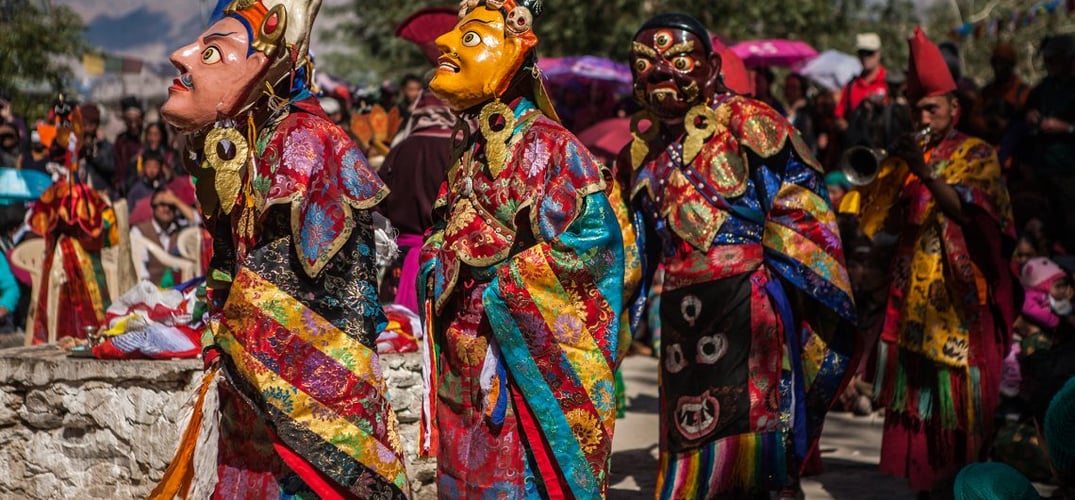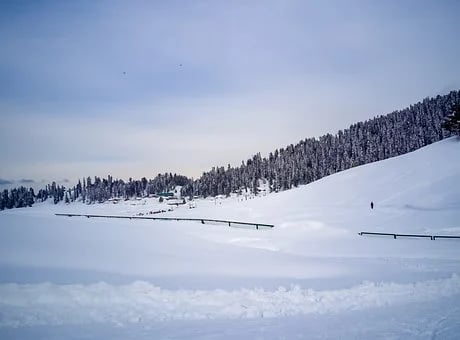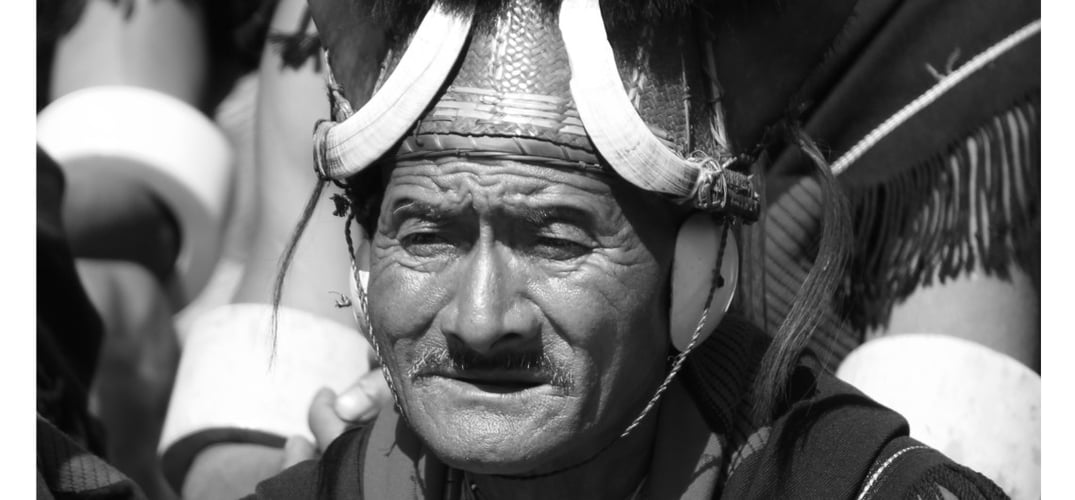How to Plan a Trip to Kashmir
Kashmir holds pride of place on the domestic tourist map. It’s a cradle of historical landmarks, natural beauty, and delectable cuisine. With its varied offerings, it is easy to plan a trip to this wondrous state.
A great number of things will depend on the detailed planning of a trip to Kashmir. The most important, of course, will revolve around the seasons of the land.
Our endeavor at Offbeat Tracks is to list out the best possibilities for our travellers.
Getting to Kashmir:
Reaching by Air
The Srinagar airport serves domestic flights to several major cities such as Delhi, Bangalore, Mumbai, etc., and airlines like Air India and Indigo fly in regularly. Prepaid cabs from the Srinagar airport ply to the city center.
Reaching by Road
i) Bus – Kashmir is connected to cities and states through a network of state and private buses, especially from Chandigarh and Delhi.
ii) Car – A taxi or rental car to Kashmir, typically to Srinagar. It is often recommended to book a taxi for multiple days, as it turns out to be cost-effective in the long run.
Reaching by Train
Trains serve the Jammu Tawi Railway Station. After reaching Jammu, one can take a bus or taxi to reach Srinagar. It may be noted, however, that it can take 8 to 10 hours to reach Srinagar by road.
Seasons:
The valley experiences all four major seasons. The ideal time to visit Kashmir is March through October. This period covers most seasonal variations, except winter.
1. Spring or Sonth
Kashmir is a vibrant painting of colorful blooms and sunshine in springtime. As the snow slowly begins to thaw and the ground turns soft, green grass bursts into sight. Flowers adorn the landscape under clear skies.
The locals are quick to set off for picnicking and flower-sighting and wicker picnic baskets, sold in basket-weaving shops, can be spotted everywhere.
Unique Places to Explore:
Badamwari: Almond blossoms herald the arrival of the season. Badamwari, located in the foothills of the Kooh-e-Maran, a mere 7 kilometers away from the capital city of Srinagar, is one of the best places to see blooming bushes of these pale pink blossoms. For centuries, Kashmiri Pandits feted the blossoming of almond trees, believing it to be the advent of spring, and visited the garden in large numbers to celebrate Navreh, or Kashmiri New Year. There was merriment, singing, and the sharing of elaborately prepared ‘wazwan’. Sadly, the violence in the state plunged the garden into disrepair. Thankfully, the Jammu and Kashmir Bank took the initiative to revive the garden in 2008, and it is now open to visitors.
A historical 14th-century park, it spreads across 300 kanals of land and houses a dome named after an Afghan ruler, Waris Shah. There are trails for tourists, along with other varieties of flowers such as irises, daisies, and pansies.
The annual spring festival is once again held with great pomp and is intimately linked with celebration and happiness. Traditional Kashmiri folk songs, dances, and cultural performances are held by local artists.
Srinagar: The flower-bedecked valley in the spring beckons one to the magnificently laid Mughal gardens. The kaleidoscope of color in Shalimar Bagh, Nishat Bagh, and Chashma Shahi, collectively, is unparalleled. The grounds of these medieval creations are built with terraces, channels, and fountains and planted with seasonal flowers, and spring is one of the best times to relish the floral excess.
The Jammu and Kashmir tourism department hosts the globally renowned, annual spring tulip festival in the Indira Gandhi Memorial Tulip Garden, in Srinagar. Overlooking the Dal Lake and spread over 30 hectares, the terraced garden is home to more than 50 varieties of tulips. It is designed superbly to give visitors a view of the entire garden engulfed in bright shades of tulips, from all directions. Additional varieties of flowers, such as narcissus, hyacinths, and daffodils, co-exist with tulips, and new assortments of flowers are added every year.
Dal Lake: However cliched, one simply cannot miss the unmistakable beauty of a shikara ride. In spring, the lake is further abuzz with the Shikara festival, where the prime attraction is the Shikara race, with several multi-coloured boats out in the water. There are cultural activities, depicting Kashmir’s heritage, Sufi music, and multiple floating shops selling souvenirs and snacks like the famed ‘gulkand’ ice cream.
Kashmir has long held a fascination for the Hindi film industry. The melodious “Yeh chand sa roshan chehra” from Kashmir Ki Kali, 1964, was picturized on Dal Lake, featuring Shammi Kapoor and Sharmila Tagore. It catapulted the latter to instant stardom. Apart from the catchy tune, the song beautifully captured several elements of Kashmir – scenery, dress, jewelry, and livelihood of Kashmiri people, as the heroine was a flower seller.
2. Summer, or Reti’kol
The delicious summer of Kashmir is a welcome respite from the hot winds in the plains. Although the days can get sunny in the valley’s lower reaches, the fresh mountain air and greenery are rejuvenating.
Unique Places to Explore:
Daksum: An undiscovered Kashmir jewel in the Anantnag district, Daksum, is a tranquil off-the-beaten-track paradise. Fenced by snow-clad mountains, coniferous forests, wildflowers, and sparkling streams, Daksum is often called a walker’s paradise. The BringhiMountain River carries delicious trout, and the banks of the uncontaminated river are a popular picnic spot. Trout fishing and angling are commonly seen here.
Tourists can either camp here or stay in the small JKTDC bungalow. Hiking is the preferred activity in the summer months and is the best way to explore the area. An easy trail is a downstream walk to the Dessu Village, which opens up a sight with small kitchen gardens, wooden houses, water mills, and fruit trees. If one walks a little further, one discovers another mountain stream and waterfall, Mathar Nallah. This narrow valley has a bridge made of just two logs.
Another trail behind the JKTDC bungalow leads to the Rajparian Nallah or Mahawar Nallah. Sheep can often be spotted grazing in the meadow nearby. Lush forest foliage covers the water on either side and walking downstream leads one to the Rajparian Wildlife Sanctuary. The protected area is home to several species of animals, including the Himalayan black bear, hangul, and wild birds.
A longer, more arduous trek with steep trails leads to Sinthan Top. Alternatively, one can drive to Sinthas Pass, along the Bringhi River, and then trek uphill to Sinthan Top. The highway is easily accessible from April to September, and the 12,000-odd feet high pass offers a priceless view.
Pulwama District: The ‘Anand of Kashmir’, owing to its high milk production, Pulwama is also known for its spring streams, waterfalls, green meadows, saffron fields, and historical monuments.
It is quickly grabbing a firm spot for mountaineers and trekkers. The drive through the district is very scenic, especially to Aharbal, a hilly valley, rich in fossils. The valley is covered in pine and fir trees, and the famous terraced Aharbal Falls, or the ‘Niagara of Kashmir’ is a popular site to visit. A 36-kilometer hiking trail from here leads to the Kausar Nag Lake.
An unusually beautiful hike, often referred to as the prettiest trek, the Tarsar, and Marsar Twin Lakes Trail is dotted with numerous pastures, changing shades of turquoise green water, green forests, and snow-capped peaks. The trek starts at Aru, and the entire stretch of the walk takes a week to complete. Trekkers can often spot migratory birds like the Himalayan golden eagles, cinnamon sparrows, and black bulbuls.
History beckons the curious in Pulwama, and travellers can drive to the 10th-century Payer Temple, sculpted out of a single block of gray stone. The shrine is open from all sides, with a Shivling in the center. It is one of the best-preserved medieval shrines in Kashmir.
Another famous ancient temple in the district is the Avantishwar Temple, dedicated to Lords Vishnu and Shiva, the preserver and destroyer. Constructed in sandstone in the 9th century by Raja Avantivarman, the temple was destroyed and buried. It was excavated by the British in the 18th century, and though the temple lies in ruins today, sightseers can still see figures of gods and goddesses.
Irish poet Thomas Moore – who had never visited Kashmir, – ‘introduced’ the beauty of Kashmir to the English-speaking world in his book, Lalla Rookh, in 1816. A fictional, oriental romance, it comprises four poems, that praise the beauty of the valley.
Who has not heard of the Vale of Cashmere,
With its roses, the brightest that earth ever gave,
Its temples, grottos, and fountains are as clear as
as the love-lighted eyes that hang over their wave
3. Autumn or Harud
A canopy of innumerable hues greets the eyes in October. Although the shortest season, autumn is Kashmir’s golden period and refers to the time of harvest.
Unique Places to Explore:
Patnitop: Rows of Deodhar trees in rustic red and never-ending meadows encased by the glittering, mighty Himalayas, reveal a charming hill station, Patnitop, in the Udhampur district. October is a riot of colorful blooms, and scenic journeys are on every eager traveler’s map.
A short trek from here leads to Nathatop, an excellent station to get a panoramic view of the Pir Panjal range. It’s well-known for its paragliding facilities. Another popular 5-kilometer trek is to Madhatop, with a pristine view of thick woods, the sparkling Chenab River, and misty mountains, offering a brilliant view of the valley. The area is also known for its curative freshwater springs.
Kud is another perfect place for nature lovers. Vast expanses of green and yellow meet the eye, and several campsites are available with various trekking options ranging in difficulty. This quiet village with quaint shops, is famous for its traditional, flaky sweet made with desi ghee, besan, and sugar- Kud patisa. Towering over Kud, lies ‘Billo ki Powri’. A staircase of stone steps chiseled out of the mountain; the craftsmanship is extraordinary. Of the 400 steps, only 270 remain intact today. Although the origins are untraceable, it is believed they were constructed by a former king of Chenani for a shorter route into town.
Gurez Valley: Sitting on the banks of the clear blue Kishanganga River and surrounded by snow-capped mountains, the isolated, alpine Gurez Valley is a trekkers’ delight. Its beauty is so legendary, British author Sir Walter Lawrence called it “the most beautiful scenery of Kashmir”, in 1895. There is diverse wildlife in the region, which includes the Himalayan brown bear and the snow leopard. Gurez is a significant archaeological site and home to the Dardic people, who have managed to retain their cultural identity and heritage. The Gurez region used to be a gateway to the Silk Route in Central Asia.
The star of Gurez is the pyramid-shaped peak of Habba Khatoon. It is named after a renowned 16th-century Kashmiri poetess, who composed soulful poems of loss after the death of her husband. Her ballads are sung in the valley even today. The beauty of this rocky mountain shimmering under the sun’s rays and moon’s beams remains unrivaled.
An uphill drive through the plains of Bandipora leads to the entryway of the wonderful Gurez. The exhilarating journey weaves through the beautiful Razdan Pass, located at an elevation of 11672 feet. Overlooking deep gorges and cliffs, the passage offers views of sacred Mount Harmukh on clear days. K2, the world’s second-highest mountain peak, was first discovered from here, in 1856.
A shrine dedicated to Peer Baba, a revered local saint, is a few kilometers short of the pass. It is believed he breathed his last here.
The Tulail area, a highly restricted territory requiring special permissions, lies beyond the Gurez Valley. Although the ride to this area can be a bumpy one, the pure exquisiteness of the untouched region casts one under a captivating spell.
The Hindi film ‘Haider’ starring Shahid Kapoor and Tabu, showcases the magnificence of Kashmir’s fall season stunningly against a rainbow of autumn colors. The Chinar of Kashmir in autumn is beautifully showcased in the movie Fitoor.
4. Winter, or Wandeh
Golden leaves give way to a white wonderland with fairy-tale magic in winter. The valley’s world-renowned ski slopes are thronged by expert and amateur skiers, lending a festive air.
Unique Places to Explore:
Baisaran: The Switzerland of India, with its wide valleys, towering fir trees, and misty environs, is an inviting destination in Kashmiri winter. It is a short distance from Pahalgam. Although it’s virtually impossible to trek to the Baisaran Valley in the snow, pony rides are the answer to savoring the picturesque views of the silver valley. The one-hour pony ride has several famed vantage points- Pahalgam Valley, Kashmir Valley, a waterfall, Hunting Point, etc. The viewpoints offer stunning views of the Lidder River and the Pir Panjal range.
Gulmarg: The ski resort in Gulmarg has been regularly rated as one of the top five ski resorts in the world. The Apharwat Peak is the longest ski slope in Asia. Skiing here in Kashmir’s outstanding natural beauty makes it a memorable experience.
The snow-covered meadow bowl in Gulmarg transforms into baby slopes, which are ideal for amateur skiers. They are wide and easy to navigate, and they are also open at night for night skiing. The slopes in the upper reaches are more suitable for expert skiers and are avalanche-prone. The ski run is divided into 2 phases: Phase I is accessible by the Gulmarg Gondola- the world’s 2nd highest-operating cable car – and connects Gulmarg to Kungdoor. Phase II is also reachable by a gondola and connects Kongdori to Apharwat Peak. One can also use a chair lift from Kongdori to Marry Shoulder, to ski back to Gulmarg. Ice skating and ice hockey are the other options to explore here.
A less crowded, beautiful alternative to Gulmarg’s busy skiing slopes, is Sonamarg. This place has equally beautiful slopes and mountain ranges.
Kashmir’s prettiness isn’t relegated to the past. Modern Hindi films have been shot here as well. The tuneful ‘Subhanallah’ from the fun film ‘Yeh Jawaani Hai Deewani’, depicted snow-clad peaks against tall, avocado-colored trees. Kashmir is even luring filmmakers. from South India. The upcoming Tamil film “Leo,” starring Vijay Chandrasekhar and Trisha Krishnan, has been shot here in freezing temperatures to catch the glory of winter.
Planning a trip to Kashmir can be daunting because the choices can be overwhelming. Additionally, personal preferences regarding accommodation specifically will dictate costs and expenses. Luckily, this ‘slice of heaven’ provides an array of selections to choose from. Get in touch with Offbeat Tracks to curate a textbook trip to Kashmir, where we will propose options to explore, that are not on the average tourist’s well-trodden path.
